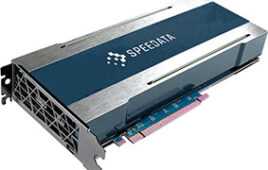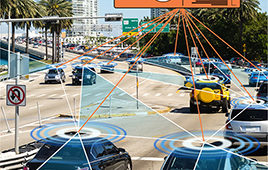Magnetic trapping will help unlock the secrets of anti-matter
A clearer understanding of the Universe, its origins and maybe even its destiny is a significant step closer, thanks to new research.
As part of a major international experiment called ALPHA*, based at CERN in Switzerland, researchers have helped to achieve trapping and holding atoms of ‘anti-hydrogen’, which has not previously been possible.
The project involves physicists at Swansea University led by Professor Mike Charlton, Dr Niels Madsen and Dr Dirk Peter van der Werf and the University of Liverpool under Professor Paul Nolan, all supported by the Engineering and Physical Sciences Research Council (EPSRC).
This breakthrough will make it possible to study ‘anti-matter’ closely for the first time, and so develop unprecedented insight into its composition/structure and improve understanding of the fundamental physical principles that underpin the Universe and the way it works.
For nearly a decade, scientists have been able to undertake the controlled production of anti-hydrogen atoms in the laboratory – a breakthrough which Swansea University also contributed to, with EPSRC support**. But as anti-matter particles are instantly annihilated when they come into contact with matter, it has not, until now, been feasible to study anti-hydrogen atoms in any detail.
ALPHA has therefore developed techniques that not only cool and slow down the anti-particles that make up anti-hydrogen and gently mix them to produce anti-hydrogen atoms, but also trap some of the anti-atoms for long enough so they can be studied.
The key focus of this effort has been the development of electromagnetic traps that have a number of cold species inside. These traps don’t just provide the conditions needed to cool the anti-particles prior to mixing. The cold anti-atoms formed also have a tiny ‘magnetic moment’*** which means they respond to magnetic fields. By arranging the magnet coils in the right way, it is possible to set up a magnetic ‘well’ in the centre of the anti-particle mixing zone where anti-hydrogen has been trapped.
“Every type of particle has its anti-matter equivalent which is its mirror image in terms of having, for instance, the opposite electrical charge” says Professor Charlton. “Because hydrogen is the simplest of all atoms, anti-hydrogen is the easiest type of anti-matter to produce in the laboratory. By studying it for the first time, we will be able to understand its properties and establish whether it really is the exact mirror image of hydrogen.
“That understanding will hopefully enable us to shed light on exactly why almost everything in the known Universe consists of matter, rather than anti-matter, and what the implications are in terms of the fundamental way that the Universe functions.”
In order to detect the anti-hydrogen atoms they were released from the trap. The silicon detector used to determine the positions of the resulting annihilations was developed and built at Liverpool. Professor Nolan comments that “the unique clean room and workshop facilities in Liverpool, together with detector and electronics expertise, allowed us to build this complex and unique instrument that is now part of the ALPHA experiment.”
Dr Niels Madsen notes: “Trapping of anti-hydrogen is a major breakthrough in antimatter physics. Having the anti-atoms trapped will allow for comparisons of matter and anti-matter to a level that until now would have been considered wishful thinking.”
The initiative is expected to run for several years, with ALPHA commencing tests on anti-hydrogen atoms in around five years time.




